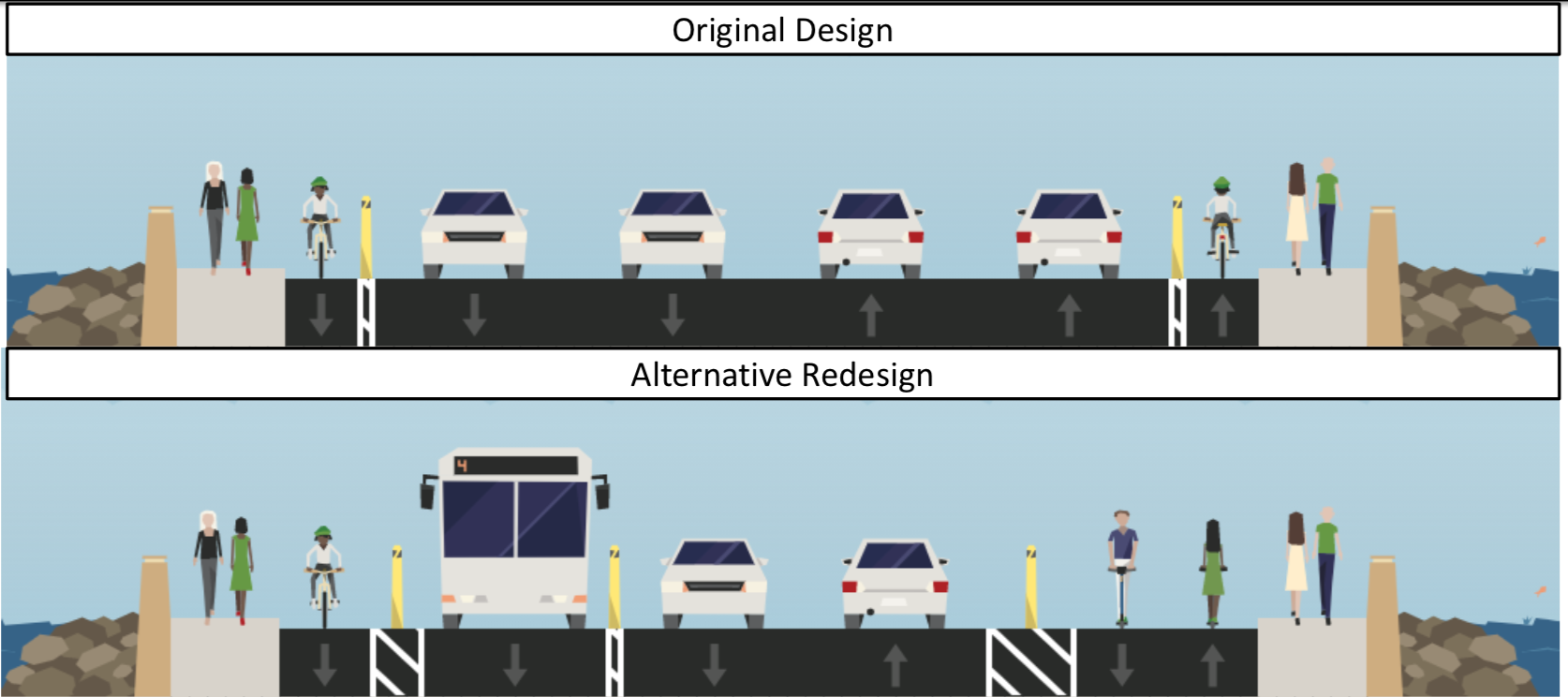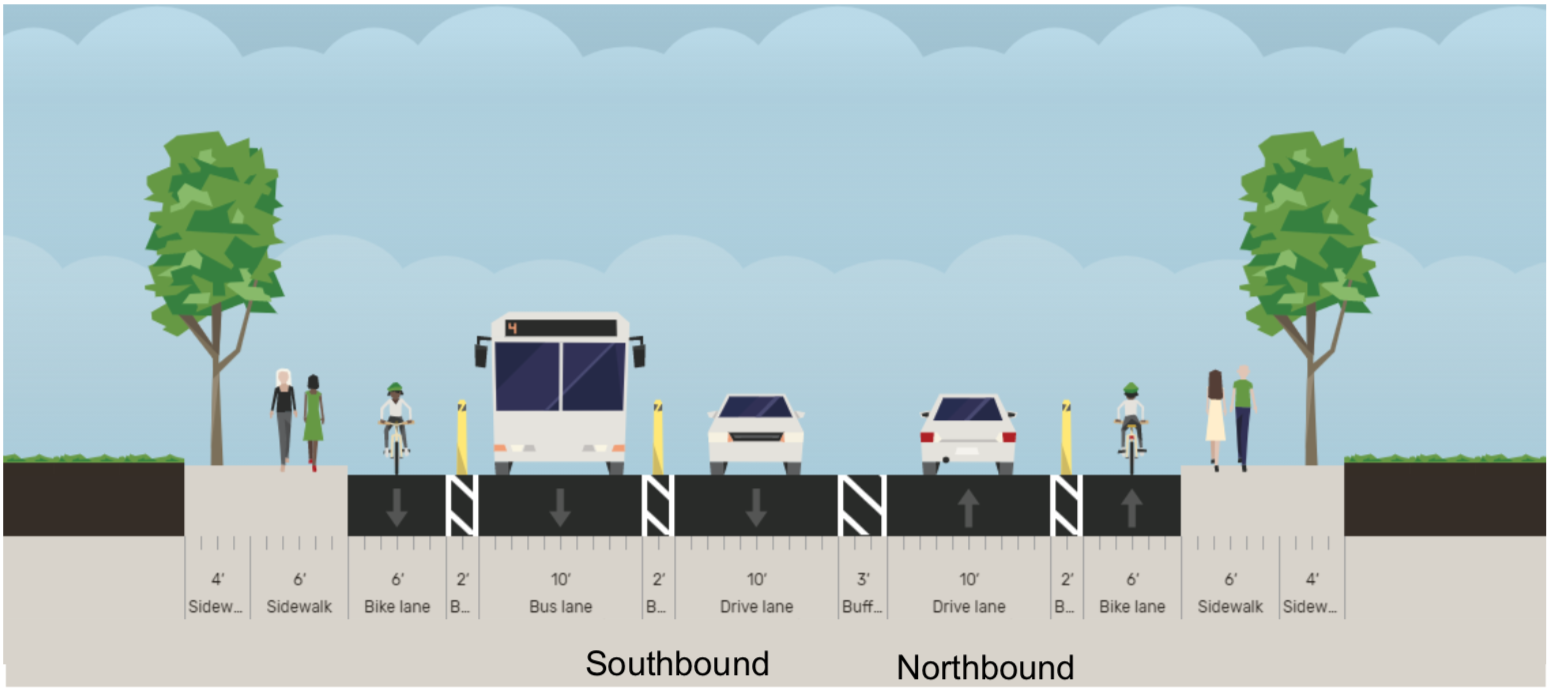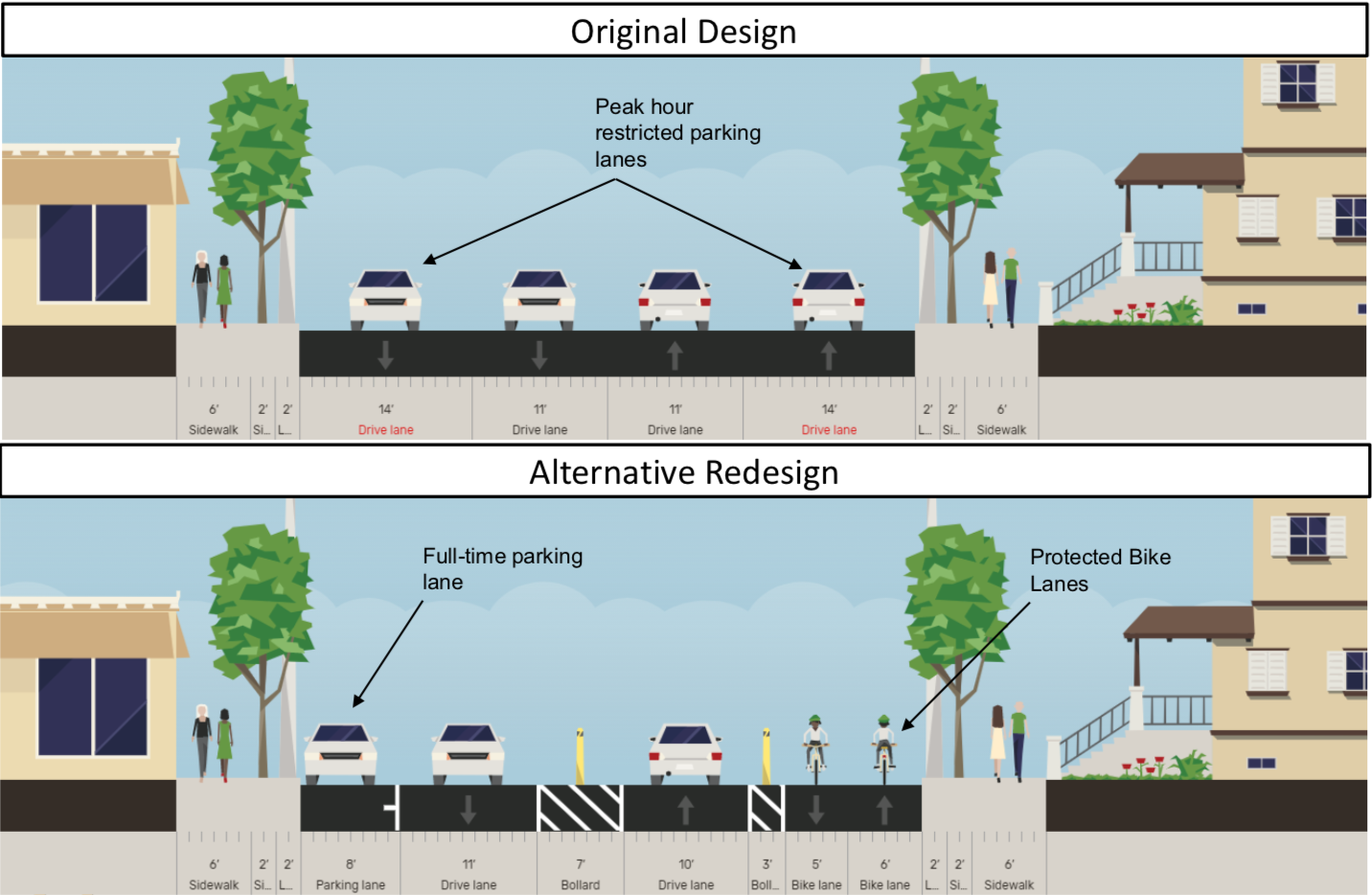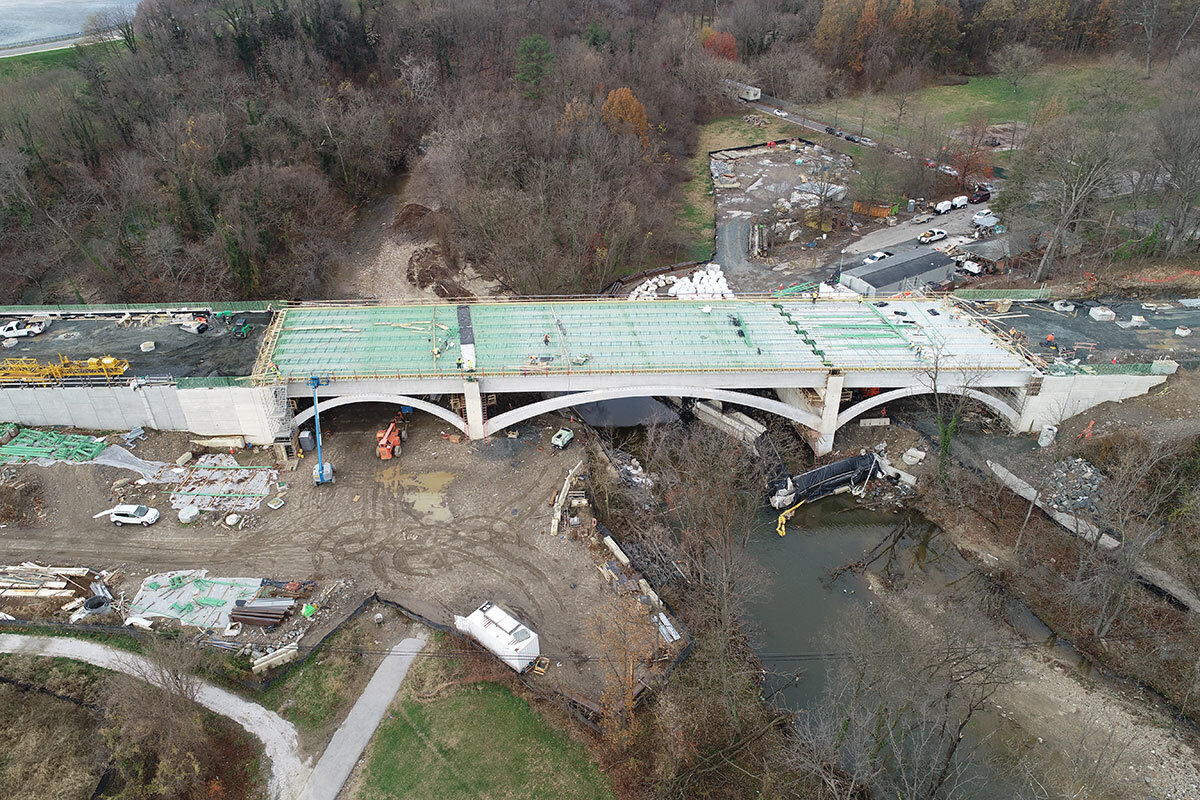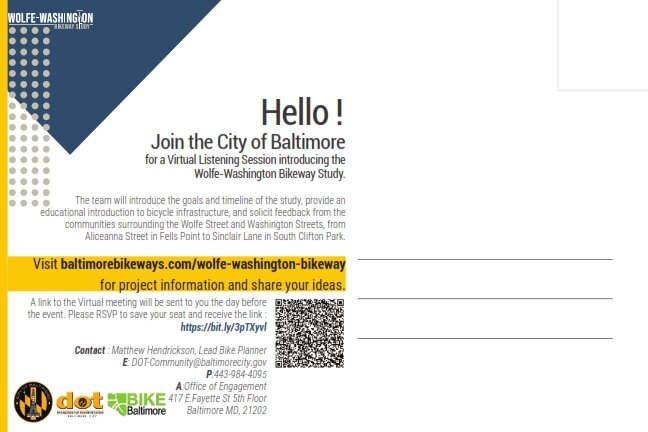Last Thursday night, Baltimore City Department of Transportation hosted a meeting with eighty community members in attendance to provide an update on the proposed design changes to the Harford Road Bridge.
The newly proposed design reduces four lanes of car traffic to two, and reallocates this space to a southbound bus travel lane, additional lanes for mixed-use walking and biking, and more buffer between moving traffic and pedestrians. Complete Streets Manager Graham Young cited the newly adopted Complete Streets Manual and Separated Lane Network Plan as guiding documents for the new design.
The design also extends changes on Harford Road to the north and south of the bridge, reconfiguring dangerous intersections and extending separated bike lanes that make both people biking and walking on the adjacent sidewalks safer from passing cars.
Overall, folks on the call were excited about the new design and also advocated to keep Lake Montebello closed to cars and for additional closure of Walther Avenue between Harford Road and Argonne Drive.
We encourage you to view the presentation and leave comments on the proposed design here, or email dot-community@baltimorecity.gov with your comments.
Since the Harford Road bridge has been closed, the streets to the north and south have seen less traffic and have been adjusted to accommodate space for other uses, like added parking, outdoor cafes, curb extensions, and separated bike lanes. These were long-standing community goals that existed well before the bridge project began design and construction.
It never made sense to have a bridge design with 4 lanes of high speed car traffic and narrow, unprotected bike lanes. But that’s what the original design called for.
From the first community meeting about the bridge, Bikemore called for a road diet and addition of separated bike lanes to the project. Neighbors complained about the high level of speeds along the current bridge, and were nervous to see the existing guardrails on the old bridge removed in the new design, because they provided basic protection to people walking across the bridge next to highway speed traffic. We were joined in calls for a re-design by then-candidate for 3rd District City Council -- Ryan Dorsey, who made changes to the bridge design a major focus of his campaign.
Despite Dorsey’s victory in the election, along with broad community support for design changes and Bikemore’s advocacy, no substantial changes were made from the original bridge design presented. In 2018, the bridge project moved to construction. As reported at the time in the Baltimore Sun:
City Councilman Ryan Dorsey, who represents the area and runs a Facebook page dedicated to news about the bridge, criticized the new bridge’s design as “incredibly unsafe” because the bike lane is not physically separated by barriers from the road, he said.
If it had been designed in Montgomery County, Dorsey said, a separated bike lane would be required due to traffic volumes and observed speeds.
“It’s really a failing of DOT that a safer design was not planned from the outset, even worse that safer design was called for by community members from the earliest stages, but DOT insisted on this unsafe design,” Dorsey said. “This DOT has not really inspired much confidence so far, but I’m still holding out hope that a change will be made before we get to a point where it’s really too late.”
Over the past 15 years, the city transportation department has ignored calls from residents, advocates and public officials to build a new bridge that is safe and accessible for pedestrians and bicyclists, said Jed Weeks, policy director of Bikemore, a bicycle advocacy group.
“Instead, they've doomed generations of Baltimoreans to an unsafe design with minimum width sidewalks and unprotected bike lanes next to speeding traffic,” Weeks said in a statement. “This bridge is a total failure in planning and an example of why we had to pass an ordinance to force BCDOT to do better in the future."
While the beginning of construction marked the end of advocacy for a smaller bridge design that could have saved millions of dollars in construction costs, we continued to advocate for an improved reconfiguration of the wide bridge that was to be built. In that time, we gained new leadership in the mayor’s office, new leadership at BCDOT, and Councilman Dorsey was re-elected, cementing that there is broad support for his complete streets vision within the 3rd District.
This redesign, combined with the closure of Lake Montebello to car traffic, the coming design and installation of trail along St. Lo Drive and 33rd Street, and future expanded separated bike lanes along Harford Road are a culmination of years of advocacy that would not have been possible without Bikemore’s supporters.


